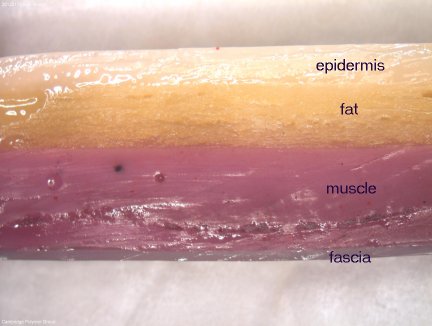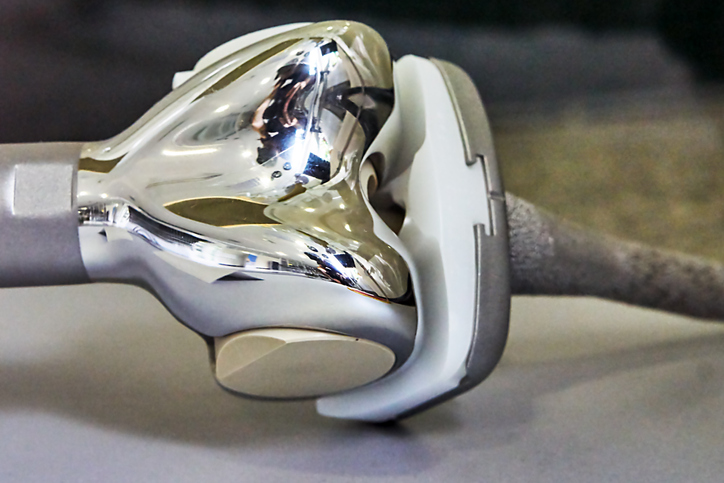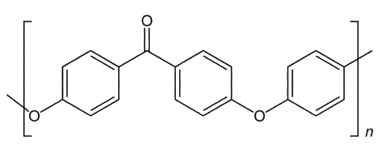Cambridge Polymer Group and Massachusetts General Hospital have co-developed novel, highly crosslinked ultra high molecular weight polyethylenes that incorporate vitamin E and are suitable for hip, knee, shoulder and spine arthroplasty applications. These technologies, generically termed CIMA, E-CIMA and Reservoir Vitamin E, are available for license.
E-CIMA
E-CIMA is a formulation containing Vitamin E throughout the material. Following blending and consolidation, the sample is subjected to ionizing radiation, which forms crosslinks in the material. The material is then deformed at a temperature below the melting point to quench residual free radicals. An annealing step returns the sample to its original shape, after which it is ready for machining into an implant. E-CIMA has wear properties similar to remelted, highly crosslinked UHMWPE, yet has the improved mechanical properties approaching virgin UHMWPE. Coupled with this is the oxidative resistance of Vitamin E.
This patented material is available for licensing. One licensee, Corin Group, published on E-CIMA properties at the 2011 Orthopedic Research Society meeting.
(2/9/2012 update): Corin has announced that they received FDA clearance on E-CIMA (product name eCiMA).
CIMA
CIMA is similar to E-CIMA, but does not incorporate Vitamin E into the UHMWPE matrix. This material provides good wear, good mechanical properties, and improved oxidation stability over annealed highly crosslinked UHMWPE.
Reservoir Vitamin E
The Reservoir Vitamin E is a surface crosslinked UHMWPE that contains Vitamin E in specific locations, allow targeted crosslinking in regions where wear rates must be control, yet high mechanical properties in regions where locking mechanisms are located. This material has excellent applications for re-surfacing or thin liners in orthopedics, and is available for licensing.
Contact Cambridge Polymer Group for information about properties, licensing and regulatory approval.



